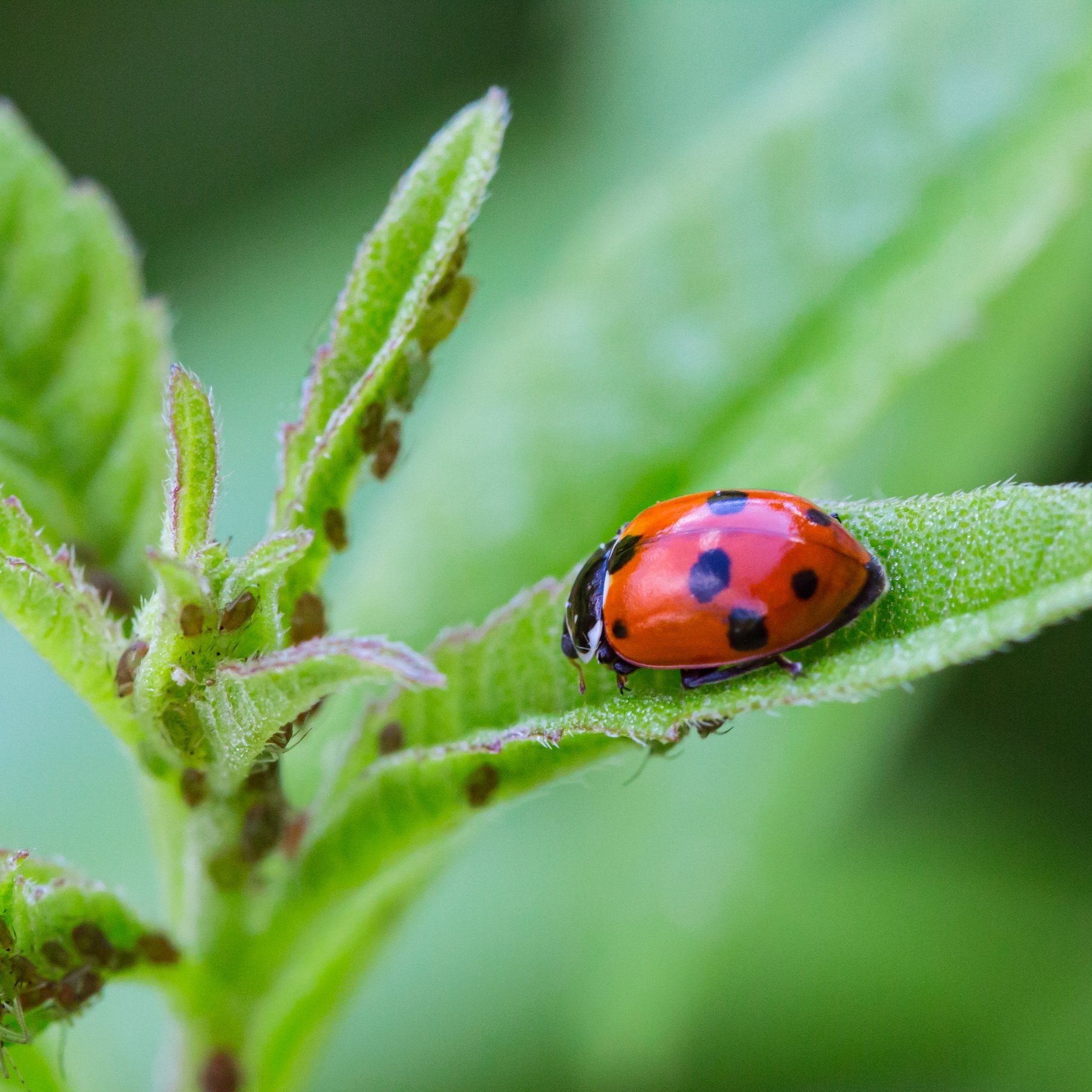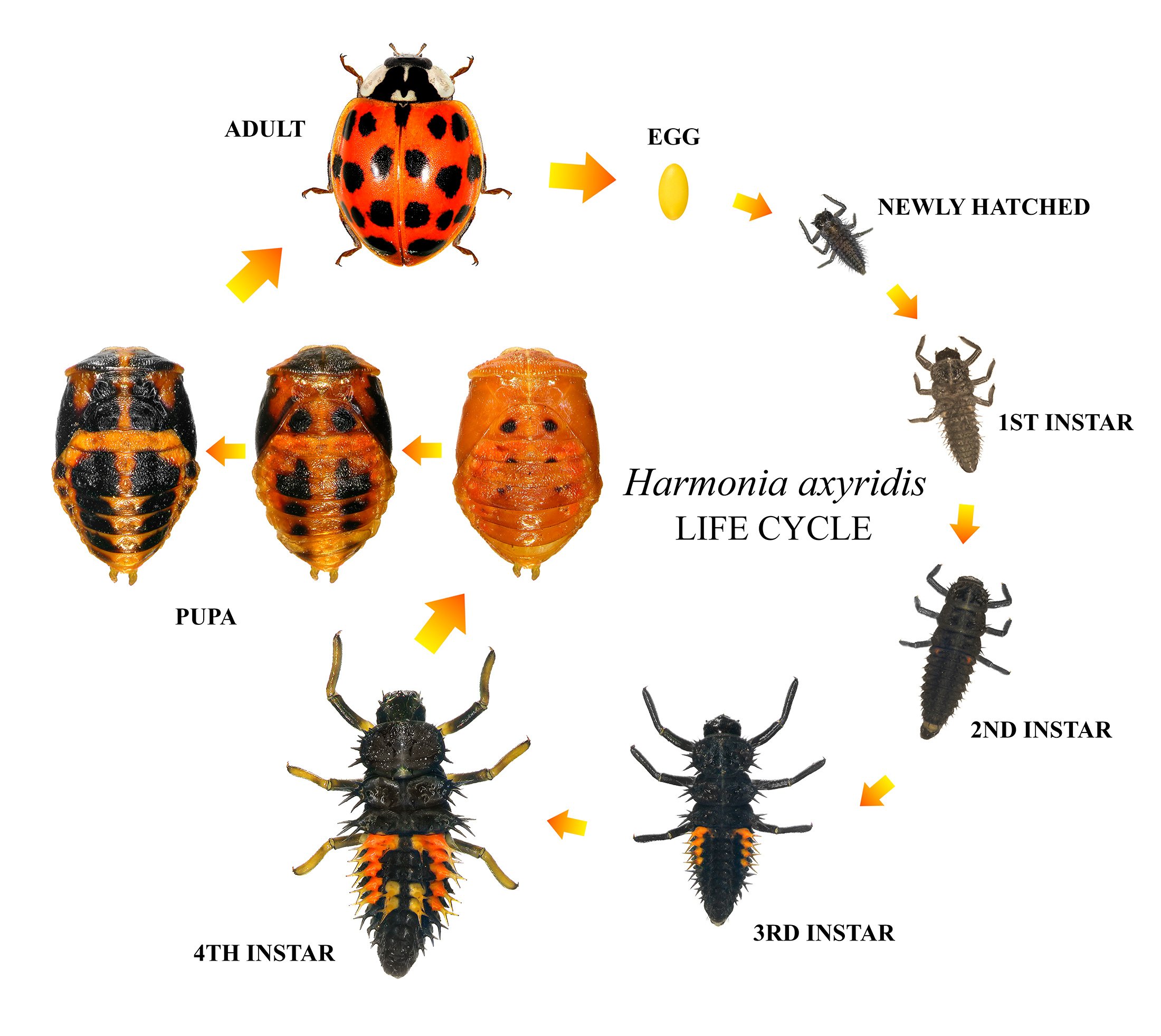Beneficial Insects - Ladybugs
Beneficial Insects – Ladybugs
Ladybugs (Hippodamia convergems) are beneficial insects that are a natural predator of aphids, mealybugs, whitefly, spider mites, thrips, leafhoppers and scale, as well as other slow-moving insects. The iconic Ladybug (convergent ladybird beetles) is a small, red, dome shaped insect with a black head and spots on their backs. In actuality, they can range in color from red to orange to black with or without the black spotting. About 200 species of lady beetles occur in California.
After release, ladybugs can begin reproducing immediately with ample food and moisture. Although they may have flown away after their initial feeding, they are likely to have laid eggs which will hatch into larvae within 5 days. Both the larvae and adults feed on their prey. When in their larval state (18 days), up to 400 aphids may be eaten. A single adult ladybug may consume as many as 5,000 aphids in its lifetime. Although this is a considerable number, keep in mind several generations may occur during one season
When you release ladybugs when an abundant food source is present, you most likely will establish a generational population. You will notice that new Ladybug larvae will appear a day or two after a new infestation of aphids emerges. The cycle can continue throughout the season.
Cultural Practices
Avoid the use of broad-spectrum, insecticides and miticides.
Control ants with bait traps or sticky insect barriers on trees.
Control dust by periodically hosing down plants.
Encourage a diverse environment with pollinator plants.
Release Rate:
It is estimated that approximately 2,000 ladybugs are needed for a small garden and up to 18,000 may be needed for a large garden. A recommended rule of thumb rate is:
Low Infestation: .5 per square foot, bi-weekly, for 2-3 weeks
Medium Infestation: 1 per square foot, bi-weekly, for 2-4 weeks
High Infestation: 2 per square foot, bi-weekly, for 3-5 weeks
When Releasing Ladybugs:
Store ladybugs in the refrigerator for 1-3 weeks. Release them periodically as needed.
Mist foliage, tree trunk and branches prior to release. Respraying periodically is recommended.
Warm beetles to room temperature prior to release.
Release ladybugs at dusk when it is cool. They will fly away during the day.
Release them close to the infected plants, at the base or on the ground near them.
Our Ladybugs are from Tip Top Bio-Control.
Lady Bug Life Cycle



